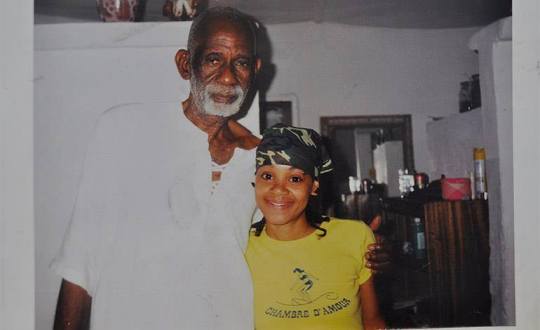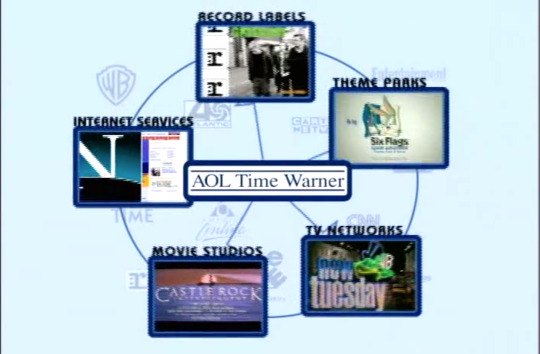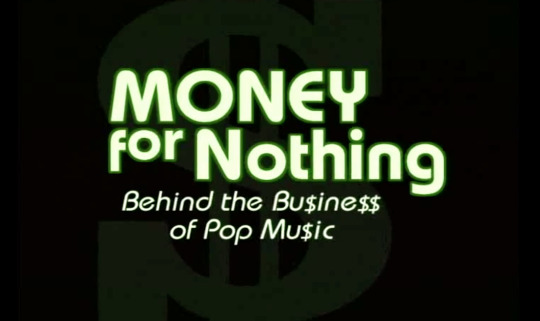Text
Hot, Fiery Love
youtube
Why did Left Eye burn down Andre Rison's house? Find out in the video above.
This was by far the biggest scandal of Left Eye's career. She had been in a rocky and abusive relationship with Andre for a while. One night after going out and drinking, she snapped, which resulted in Andre's house being burned down.
0 notes
Text
A Supernova's light dimmed
youtube
How did Left Eye actually die? In the video above Left Eye's sister and her friend (both in the car during the crash) share details about the bleak event.
10 passengers, 9 injured, 1 dead.
0 notes
Text
Early Days of a Supernova (Freestyle)
On May 27th, 1971 in Philadelphia, Pennsylvania a supernova was born. Lisa Nicole Lopes was the oldest of three children. Her sister and brother, Raina and Ronald, were extremely close growing up. Her parents Wanda and Ronald Lopes were huge inspirations to her style and talent. Her mother was a seamstress who came from a very “artistically inclined family”, as Lisa explains in the documentary Last Days of Left Eye. Her father was a U.S. Army sergeant who came from a musically inclined family. Ronald played “almost every instrument known to man”, most notably the piano, drums, and clarinet. Little Lisa Lopes was a musician at the age of 4 years old when she first started to play piano. She was also a talented artist, using art as an outlet of expression at a young age. These interests would stay with her as an adult, adding to her unique style that sets her apart from other female rappers of the time. But we all wonder what Lisa's childhood was like.
Lisa and her siblings, being raised by an Army sergeant, were like little soldiers. Ronald had them on a strict schedule. In the morning he would wake them up at 6:00 am on the dot and they would rotate in 15 minute intervals doing their morning duties. These duties included, using the bathroom (brushing their teeth, washing their faces, doing their hair etc.), getting dressed, and making breakfast and lunch. Lisa always had to wake up first and start the rotation since she was the oldest. By 7:30 am they would be done, but didn’t have to leave the house until 8:00 am. When they asked their father if they could sleep in an extra half hour he replied by telling them they needed time to think, she tells the full story in the video below.
youtube
Although Lisa’s father was very strict she still loved him and even laughed at her childhood stories when reminiscing. Since Lisa was the oldest child she took on the most responsibility and looked after her siblings. This taught her to be a leader. I think the discipline that she learned from her father helped her succeed later in life amongst a sea of upcoming artists. She shined brighter than the rest because her discipline kept her focused and her style set her apart. Lisa was such a powerful force in many people’s lives. Her childhood, although it was rough at times, shaped her into the strong, outspoken woman we know and love.
3 notes
·
View notes
Text
Rejecting Science

(Alt text: Photo of Dr. Sebi and LIsa image source)
Lisa (Left Eye) Lopes was a very spiritual and herbalistic person. She believed in astrology, numerology, and the use of herbs to heal the body. She worked closely with self proclaimed herbalist healer Dr. Sebi, who was not a licensed medical professional. Dr. Sebi worked with many A list celebrities like Michael Jackson and John Travolta. While researching more into Lisa’s beliefs I started to wonder “does this stuff really work”? I read two academic articles about alternative medicine to learn more information.
During my research I came across the article “Scientific Appearance and Homeopathy. Determinants of Trust in Complementary and Alternative Medicine” by Josep Lobera and Jesús Rogero-Garcia. This article was published in the Health Communication journal by Taylor & Francis Group in April 2020. This article studies the use of complementary and alternative medicine (CAM) like homeopathy, acupuncture, herbal therapy, high dose vitamins, massage therapy, and relaxation techniques. The study analyzes the demographics of people who trust CAM and superstitions, stating “our study aims to understand the building of trust in controversial CAM treatments”. The audience of this journal seems to be medical professionals. The method used to gather information for this study was surveys with questions like “homeopathic products are effective”, “I believe in paranormal phenomena”, “I trust healers”, and “horoscopes predict what happens”. Subjects would rate these phrases as truth or false on a scale from 1-5. They also looked into other variables like “degree of confidence in others”, “level of scientific knowledge”, and “degree in which one associates science and technology with threats”.
The study found that the demographic that trusts homeopathy and acupuncture the most are middle-aged women who live in big cities and have an interest in technoscience. There is a high level of trust in paranormal phenomena, horoscopes, and lucky numbers in subjects under 25. Superstitious practices were common among practicing catholics, those who live in a household with little income, and those who have a lower level of education. The study concluded that trust in CAM does not arise from ignorance or rejection of science and that an unawareness of the difference between science and pseudoscience may influence the spread of false health information.
One source that the article cited was an academic article titled “Powerful Pharma and its Marginalized Alternatives” by Pia Lamberty and Roland Imhoff. This article predicts that people who use CAM have a conspiracy mentality which makes them skeptical about the safety of science and medicine. Participants from Germany took an online survey which asked questions about conspiracy mentality, attitudes toward medical approaches, general health behavior, etc. The results of this study confirmed that conspiracy mentality is positively associated with the appreciation of homeopathy, herbal medicine, and CAM in general. It concluded that a conspiracy mentality predisposes people to distrust powerful groups.
Both Lisa and Dr. Sebi spoke openly about their distrust in the medical industry. They believed that any illness could be healed through an herbal alkaline diet and physical activity. Lisa also believed in “superstitions” such as astrology and numerology. According to the first article she is among the stereotype that trusts CAM the most. She also was skeptical of the government and medical industry which makes her more likely to use CAM according to the second article. Both of these articles provided information about the sociology of CAM users which helped me understand why Lisa would be more likely to use it than others.
38 notes
·
View notes
Text
Summarizing Money for Nothing: Behind the Business of Pop Music (Freestyle)
youtube
The documentary Money for Nothing: Behind the Business of Pop Music by the Media Education Foundation dives deep into the financial and business sides of the music industry. Consumers often wonder if musicians are as rich as they seem, assuming that they’re “big ballers” because of how lyrics and music videos portray their lives. This film shows us that this is far from true for many artists. The film tackles 3 major topics: commercialization, homogenization, and monopolization.
Commercialization is the condition of being focused on the profitable aspects of something, especially to excess. Major record companies like Sony Music Entertainment prioritize money over art. Large corporations like this often choose to follow a blueprint rather than exploring creative and experimental options. Independent artist Ani Difranco said in the film that “record companies are corporate systems that commercialize and homogenize culture”. Rapper Chuck D explained that the companies are mostly run by business people and not creative people. This explains why they follow a formula instead of actually developing talent. Around the time of Britney Spears’ success many record companies began managing groups and individuals that copied Britney’s look and sound (learn more about this in the video below). If they don’t create their own formula they’ll steal the formula of another successful artist.
youtube
Homogenization is the act or process of making something more uniform or similar. Once a certain sound or style gains traction, record companies hop on it immediately branding or rebranding artists accordingly to profit from the trend until it’s time for an inevitable change. Being profit oriented instead of art oriented creates a relatively uniform sound across artists on different labels because no one is innovating. Once innovation happens and something/someone becomes popular and profitable the cycle starts again. Music journalist Dave Marsh explained this concept stating that “the nature of monopoly is to perpetuate itself and it’s own image and not to innovate. As these companies get bigger there’s more to lose and that means that you need immediate results, you can’t develop talent, because talent can’t be developed overnight”.

(Alt text: photo from the documentary showing that AOL Time Warner (Warner bros) owns a record label, theme park, internet service, movie studio, and TV network.)
Monopolization is to obtain exclusive possession of; keep entirely to oneself. Record companies like Warner Music Group, owned by Warner Bros Entertainment Inc. (formerly AOL Time Warner), do this by owning multiple companies that promote the music they’re producing. For example, Warner Bros Ent. owns a theme park, a movie studio, and a few television networks which can all be used to promote their artists while their artists promote them. The documentary highlights the close relationship that music and advertisements have. When I hear certain songs from my childhood memories arise of the fun times I’d have. Sometimes when I listen to a song I’d listened to when I was sad, I get sad all over again. Music can make connections to certain memories or feelings. Record companies use this to their advantage when collaborating with other companies for commercials, movies, or cameos in music videos. Music industry journalist Shirley Halperin explained this phenomenon perfectly stating that “record companies aren’t just looking for artists, they’re looking for artists that can be spokespeople to sell products”.
At this point you're probably thinking ”this can’t be all bad right? I mean they’re still rich.” While this may be true for a select few artists, this isn’t a reality for all, even the top of the top. TLC is the best-selling American girl group of all time and they still filed for bankruptcy because their recording contract was being weaponized against them and they weren’t paid fairly compared to how much money they were generating for their label. The flashy clothes, music videos, studio time, makeup artists, hair stylists, etc. are all paid by the record company right? Well yes and no. The company pays the upfront costs. All money must be paid back in royalties (a payment made to an asset owner for the right to use that asset). Dave Marsh says in the documentary that if the artist fails to pay the money back the company can hold their music and refuse to promote it. So they have to make a decision to get their music out and be broke or refuse to pay the company back, be broke, and let their hard work collect dust.
youtube
TLC was strong enough to open up about their circumstances and bring awareness to this common occurrence, but many artists never speak up. Being a musician is much harder than most people can even imagine, whether an artist is signed to a label or not. The business people that run these companies often disregard their artists' creative opinions, controlling their image and their art. They develop “cookie cutter”, formula following artists that are more like ambassadors than musicians. They monopolize the industry to make sure that they have little competition. It’s an extremely difficult industry to work in. Being aware and conscious consumers can help us better recognize real talent vs a fabricated image. We can also observe the nature of the content we’re engaging with, being able to conclude whether or not we like a product because it’s good or because it’s ingrained in our minds.
1 note
·
View note
Text
Analyzing Money for Nothing: Behind the Business of Pop Music
I’ve always admired musicians and wished that I could be on the red carpet with them. They all seem so happy, wealthy, and successful. I’ve always wondered “are musicians actually as rich as they seem”? I watched the documentary Money for Nothing: Behind the Business of Pop Music by the Media Education Foundation (also available on youtube) in order to learn more about what it’s really like to work in the music industry and was totally surprised by the information I learned.

(Alt text: photo of the opening title screen of the documentary with the title "Money for Nothing: Behind the Business of Pop Music")
This documentary interviews music journalists and musicians about the business and financial sides of the music industry. Bringing awareness to the commercialization, homogenization, and monopolization of popular music. (Read the full summary here) Record companies are owned by business people whose overall goal is to make money instead of developing talent and producing art (commercialization). This need to make money creates many artists that look and sound similar because they’re following a money making formula instead of innovating (homogenization). These companies also own and fund other companies like radio stations and tv stations that promote their artists (monopolization).
So, are musicians actually as rich as they seem? Some may be, but many aren’t. The business people running the record companies often make more money than the artists. All expenses used to make and produce the artists songs and videos must be paid back to the record label. So, whenever an artist does make a lot of money they have to pay a lot of expenses that usually leave them broke. The musicians interviewed for the documentary are used as “experts” to provide their first hand experience in the industry and provide information about the financial side of the industry. There are also music journalists in the documentary who provide information about how the record companies operate. The record companies and business people are seen as the villains. The musicians are made to be seen as victims of this capitalistic system. It’s not necessarily sad, but the viewer is made to sympathy for the musicians because they care deeply about their art.
The documentary tells its story through these interviews allowing the musicians and journalists to tell their personal truths. The documentary is more centered on relaying information through first hand experience than having the narrator tell the information, although the narrator does help pull all the information together. This documentary is very interesting and conveys its message perfectly. The data it uses is very personal because there aren’t many studies or statistics on this topic.
Overall, this documentary really opened my eyes to the realities of musicians' struggles. It made me appreciate artists more and look deeper than the image they portray to the media. I encourage anyone interested in being a musician or working in the music industry in general to watch this documentary.
0 notes
Text
Right and Left Sides
Many articles were released about Left Eye's death. TLC is the best-selling American girl group in history so it makes sense that there was a lot of buzz surrounding her passing. Some conservative news sources see her as reckless and irresponsible, while liberal news sources report her being an inspiration and a role model. A reader’s opinion on Left Eye’s character will differ depending on the source they’re reading.

(Alt text: Photo of the aftermath of Left Eye's car crash Photo Source)
I read two articles that report on Left Eye’s death and cover some details about her life and career. Although these articles cover the same basic information, the way they are formatted are completely different. First I looked at an article titled “Left Eye’s Tragic Herb Quest: R&B ‘Death Trip’ Diva Sought Spiritual Rebirth” published by the New York Post. This publication leans more conservative and that is reflected in the writing. Firstly, the title makes light of her crash showing that they don’t take her death, or her, seriously. Also, the wording is very flat with very short stanzas, simply stating information about her life.
The second article I read is titled “Hip-Hop Singer Lisa ‘Left Eye’ Lopes Dies” published by the Washington Post. This publication leans more liberal which is also reflected in the writing. Firstly, this article goes more in depth rather than blandly reporting basic information about her death, it also touched on her life and accomplishments. Most notably, it recognizes her impact on the music industry and society, Mentioning that her lyrics discuss serious issues like Aids, safe sex, and self-respect.
Both articles fulfilled the bare minimum of reporting the details of her death, but the Washington Post article went beyond that and discussed deeper into her character, mentioning both her faults and her achievements. The Washington Post article mourned her death and celebrated her life while the New York Post article simply told the reader she died and stated some basic facts about her life.
2 notes
·
View notes
Text
On The Hunt For Information
To gain more information for my future blog posts I did some research through my university’s library database. First, I came up with a list of 30 keywords and phrases related to Left Eye. Then, I used the database to look up E-books related to Left-Eye's interests. Lastly, I watched a documentary about Left-Eye’s trip to Honduras before her death.
At first I thought coming up with the keywords/phrases would be hard. I mean 30 sounds like so many right? But I started typing and before I knew it I had 32. Here’s the list: Lisa Lopes, Left Eye, Rozonda Thomas, Chilli, Tionne Watkins, T-boz, TLC, No Scrubs, Creep, Ain't 2 Proud 2 Beg, Girl Group, R&B, Rap, Hip-Hop, Singers, rappers, Car crash, Famous deaths, mysterious deaths, spirituality, numerology, astrology, paranormal, honduras, atlanta, CrazySexyCool, Fanmail, Supernova, MTV, Grammy awards, Soul Train award, Billboard Music award.
After creating the list it was time to do some digging. At first I tried just typing in “Left Eye” and “Lisa Left Eye Lopes” to look for E-books in the database but nothing came up. So, I searched for one of her interests instead. I chose numerology because it’s a topic I wanted to learn more about. I found a book called Numerology and Vibrations by Joe Shelby Riley. This book has a lot of introductory information about numerology and what numbers mean in this system. For example, I learned that the number 2 represents directive ability, kindness, Integrity, and faith.

(Alt text: GIF of Left Eye Smiling)
The Last thing I did was find a documentary related to Left Eye. This one was a struggle. I searched “Left Eye” on multiple websites through my school's database and nothing came up on any of them. At this point I could have chosen another keyword or phrase to search for but there was a specific documentary I had in mind. The documentary “The Last Days of Left Eye” (available on youtube) follows Left Eye during her 30 day spiritual retreat in Honduras. This unfortunately ended up being where she died. The original goal of the documentary was to document this journey and to be a “get to know Left-Eye” film but it is now a piece of history, showing us what the last 30 days of her life was like.
This activity was a scavenger hunt for research. I made a list of keywords relevant to my topic and searched for relevant information. Because Left-Eye’s life isn’t necessarily academic, it was hard to find information about her through these databases. The documentary I watched wasn't available at all through my university’s resources. While I was able to find information that I could relate to Left-Eye’s life, I didn’t find much information directly about her.
1 note
·
View note
Text
To The Left, To the Left...

(Alt text: Photo of TLC with mesh shirts that have the letters TLC on them)
Lisa (Left Eye) Lopes is an extremely unique and successful American rapper. Making up the L in R&B girl group TLC alongside vocalists Tionne (T-Boz) Watkins and Rozonda (Chilli) Thomas. Left Eye brought her unique style and fashion to the group which set them apart from other groups. Many of their outfits are categorized as “iconic”, including the photo above. Their trendy yet futuristic style makes their fashion timeless, which is why many people still reference and recreate their outfits today. According to a 2002 Ebony Magazine article titled "Remember Lisa (Left Eye) Lopes", Left Eye also “built furniture, painted and sketched, made clothes for the group, and helped build tour stage sets”. Her artistic ability, unique fashion, and high pitched rapping style is what she’s best known for.
This blog aims to explore and examine the details of Left-Eye’s Life and mysterious death. We’ll discuss topics such as her childhood, TLC’s success, her toxic relationship with Andre Rison, her spiritual retreat to Honduras, and the infamous car crash. Because Left Eye was a deeply spiritual person, we’ll also explore her beliefs and their significance to her death. The goal of this blog is to deep dive and investigate both the supernatural and natural elements regarding Left Eye’s life and death. The goal is not to jump to any definitive conclusions about anything. This will be a journey through the mind, body, and soul of Left Eye and the legacy she left behind. While her death was extremely tragic, there were many beautiful things about her life and about her. We’ll explore the good, the bad, and the ugly.
Left Eye has made such a huge impact on the world, specifically modern fashion and hip-hop music. She has influenced my sense of fashion and the type of music I enjoy. She’s influenced me to have safe sex with her constant promotion of condoms and safe sex practices. She has encouraged me to speak up for myself by being such an opinionated and outspoken woman. She’s influenced me to explore spirituality and become more in tune with nature. Left Eye has influenced millions of others in the same ways and I hope she influences you in some way. Thank you for coming on this journey with me, I hope you enjoy it.
4 notes
·
View notes